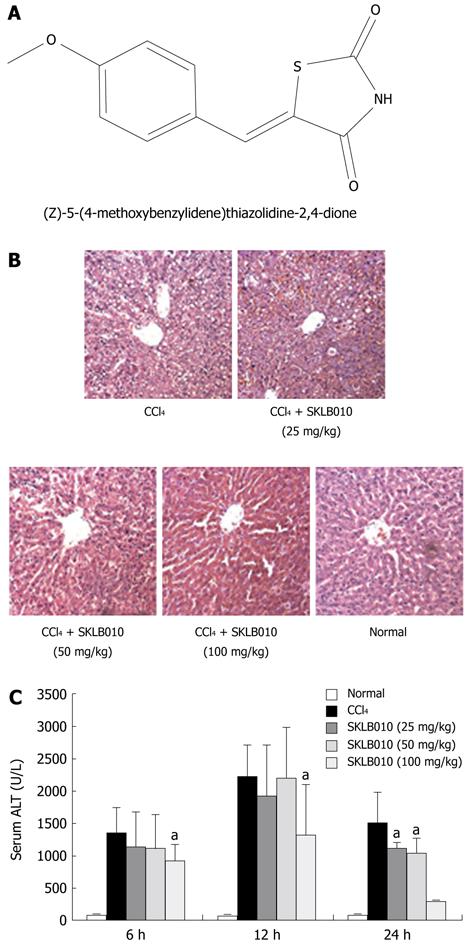Copyright
©2012 Baishideng Publishing Group Co.
World J Gastroenterol. Feb 21, 2012; 18(7): 654-661
Published online Feb 21, 2012. doi: 10.3748/wjg.v18.i7.654
Published online Feb 21, 2012. doi: 10.3748/wjg.v18.i7.654
Figure 1 Effect of (Z)-5-(4-methoxybenzylidene)thiazolidine-2,4-dione on carbon tetrachloride-induced hepatitis.
A: The structure of (Z)-5-(4-methoxybenzylidene)thiazolidine-2,4-dione (SKLB010); B: Representative liver histology of the rats in each group at 24 h after carbon tetrachloride (CCl4) injection, liver sections were stained with hematoxylin-eosin (original magnification 200 ×); C: Time course of hepatocyte necrosis after CCl4 challenge, alanine aminotransferase (ALT) was measured in serum collected at time points as indicated. Values are presented as mean ± SD of the mean. (n = 5, aP < 0.05 vs the level in the model group).
- Citation: Chen ZZ, Wang ZL, Deng CY, Zheng H, Wang XH, Ma L, Ye X, Ma YH, Xie CF, Chen LJ, Wei YQ. (Z)-5-(4-methoxybenzylidene)thiazolidine-2,4-dione protects rats from carbon tetrachloride-induced liver injury and fibrogenesis. World J Gastroenterol 2012; 18(7): 654-661
- URL: https://www.wjgnet.com/1007-9327/full/v18/i7/654.htm
- DOI: https://dx.doi.org/10.3748/wjg.v18.i7.654









